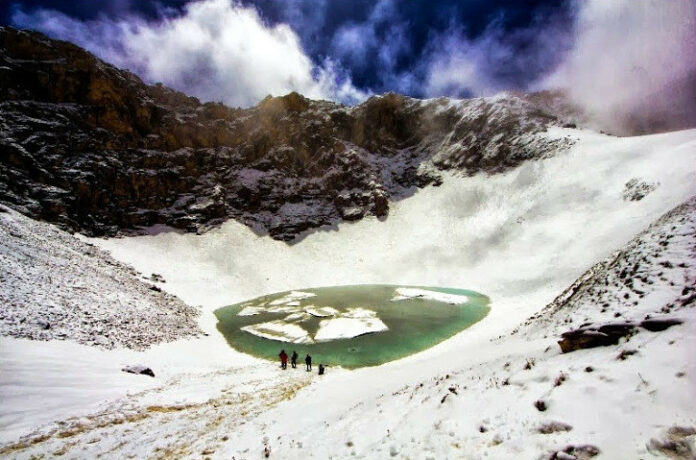Roopkund, also known as the Skeleton Lake, is a small glacial lake situated at an altitude of about 5029 meters in the Indian state of Uttarakhand. It remains frozen for most of the year. When the ice melts, hundreds of human skeletons can be seen lying at the water’s edge and at the bottom of the lake.
The lake was discovered in 1942 by a forest ranger.
The Initial Theory
Initially, it was assumed that the remains belonged to Japanese soldiers who had infiltrated the area and then perished due to the “inhospitable” conditions. Since the discovery occurred during World War II, the British immediately sent a team to investigate if they had stumbled upon some secret enemy operation. However, after the investigation, it became clear that the skeletons could not have belonged to Japanese soldiers.
Alternative Theories
Some researchers and scientists speculated that the bones belonged to General Zorawar Singh of Kashmir and his men, who got lost and perished in the Himalayas while returning from the Battle of Tibet in 1841. However, radiocarbon analyses conducted in the 1960s disproved this theory.
Analyses showed that the skeletons could have been there from the 12th to 15th centuries. This led historians to think that the remains were somehow linked to the unsuccessful attack of Muhammad Tughlaq on the Himalayas.
Other scientists believed that the bones belonged to victims of an unknown epidemic. Some anthropologists suggested that these were victims of a ritual suicide. It wasn’t until 2004, when a team of European and Indian scientists arrived in the area at the initiative of National Geographic, that the horrible truth of this mystery began to surface.
DNA Studies and Findings
DNA studies led to the dead being divided into two categories: some were short, others were much taller. The bodies belonged to a much earlier period than previously thought. It turned out that the bones had been there since around 850 AD.
Cracks on the back of the skulls indicated that they had died from a fatal blow to the head, but it wasn’t caused by a landslide or avalanche. The blows were delivered by blunt, round objects about the size of cricket balls. The absence of other injuries on the bodies indicated that the blows came from above.
Studies by scientists who examined the bone damage concluded that the cause of death was a massive hailstorm: the hailstones could have been the size of cricket balls (up to 7 cm in diameter), and there was no chance for the people to escape in the open. Considering the avalanches in this area, the group could have consisted of up to six hundred members, some of whom may have been swept into the lake.
There is no historical evidence of any trade routes in this area, but Roopkund Lake is located on an important pilgrimage route of the Nanda Devi cult, with festivals occurring approximately every 12 years. This group of 500-600 people was most likely pilgrims. They were all from the same place and had hired a group of porters who knew the way.
As they approached the lake, they likely descended to gather fresh water when clouds gathered above them. There were no shelters in the Himalayas at that time, so many, if not all, of them perished. Due to the thin air and constantly low temperatures in the region, their bodies were well preserved. Some skeletons even had hair and nails, as well as intact pieces of clothing.
It’s possible that some of the pilgrims escaped this fate, returned to their village, and told the tale, because there is an interesting legend in the local villages. In a folk song of the Himalayan women, there is a description of a goddess who became so angry at the people who invaded her mountain abode that she sent a deadly rain from the sky in the form of stones “hard as iron.”
Today, this small lake, hidden in the Himalayas, has become popular among tourists. The lake itself is located between two majestic peaks: Trisul (7120 m) and Nandghungti (6310 m), and the climb to it at an altitude of 5029 meters takes from three to six days. The route features waterfalls, mountain meadows, ridges, and temples.
